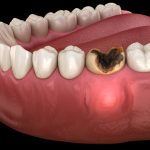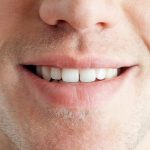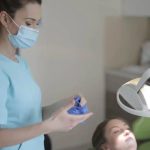Why Teeth Break Off at Gum Line: Causes and Prevention Tips
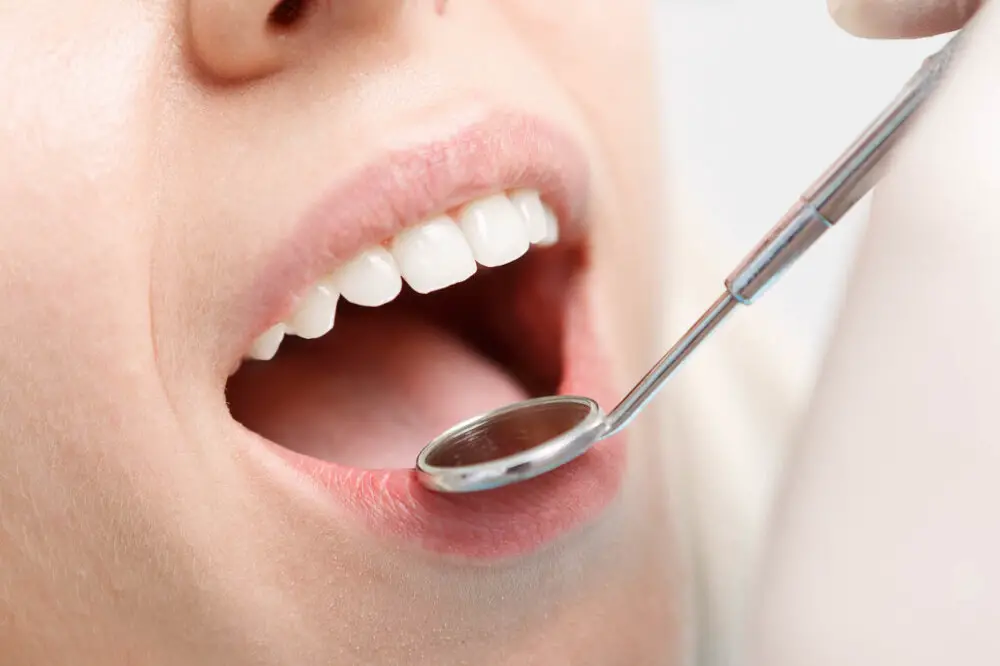
Teeth are the most crucial part of our body that helps us in chewing and digesting food. Losing a tooth can be a painful and unpleasant experience, but what’s more concerning is when teeth break off at the gum line. This condition is a severe dental issue that can cause discomfort and affect your overall oral health. Understanding the causes and preventive measures for this problem can help you avoid such a situation and maintain healthy teeth. Several factors can cause teeth to break off at the gum line, including poor dental hygiene, trauma, and underlying medical conditions. These factors can weaken the teeth and make them more susceptible to breakage. Ignoring the problem can lead to further complications, such as infection and gum disease. Therefore, it’s essential to identify the reasons behind this issue and take appropriate measures to prevent it. In this article, we will discuss the causes of teeth breaking off at the gum line and provide some helpful prevention tips to avoid this dental problem.
Teeth breaking off at the gum line is a common dental problem that affects many people. This issue can be caused by several factors, including tooth decay, gum disease, trauma to the tooth, and grinding or clenching of the teeth. When a tooth breaks off at the gum line, it can cause significant pain and discomfort, as well as affect the overall appearance of the smile. Additionally, this problem can lead to further complications, such as infection, tooth loss, and bone loss in the jaw. Therefore, it is essential to practice good oral hygiene and seek prompt dental care to prevent and treat this problem.
When it comes to dental health, many people are concerned about their teeth breaking off at the gum line. This issue can be caused by several factors, including severe decay, gum disease, trauma, and excessive teeth grinding or clenching. Prevention tips for this dental problem range from maintaining good oral hygiene habits, such as regular brushing and flossing, to avoiding hard and sticky foods that could damage teeth. Additionally, seeing a dentist regularly for check-ups and cleanings, as well as addressing any underlying dental issues promptly, can help reduce the risk of teeth breaking off at the gum line. By taking proactive steps to care for their teeth, individuals can maintain healthy and strong teeth for years to come.
Causes of Teeth Breaking Off at Gum Line
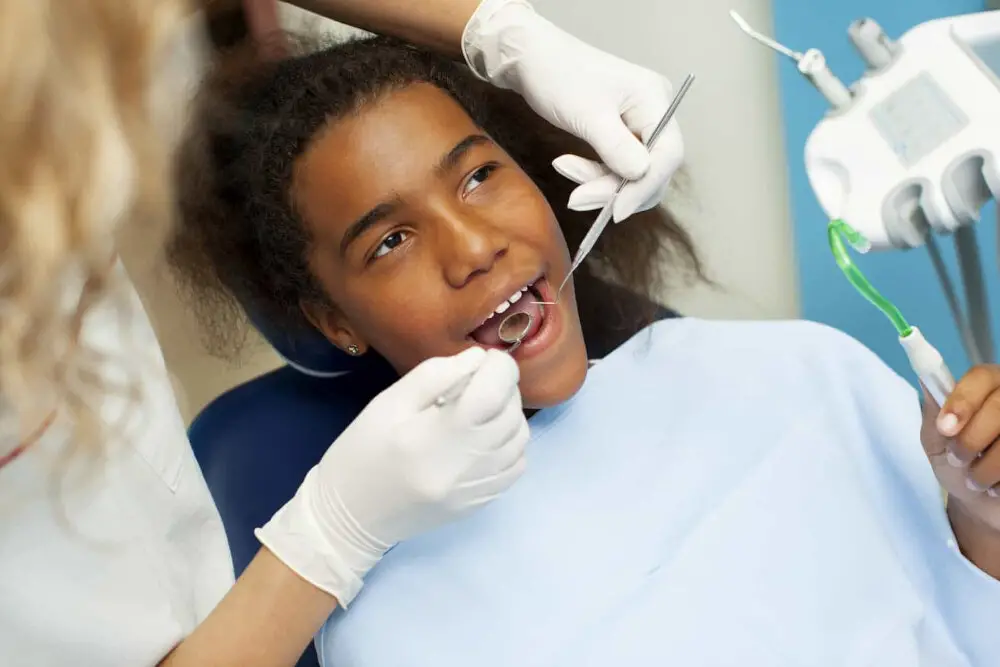
Teeth breaking off at the gum line is a common dental problem that can be caused by several factors. One of the primary reasons for this issue is gum disease, which can lead to the weakening of the bone structure supporting the teeth. When the bone is weakened, the teeth become loose and can easily break off at the gum line. Poor oral hygiene, smoking, and certain medical conditions such as diabetes can also contribute to gum disease and teeth breaking off. Another common cause of teeth breaking off at the gum line is trauma or injury to the teeth and gums. This can be caused by accidents, sports injuries, and even chewing on hard objects such as ice or hard candy. In some cases, teeth may also break off due to excessive grinding or clenching of the teeth, a condition known as bruxism. It is essential to seek professional treatment promptly if you experience this issue, as leaving it untreated can lead to further dental problems such as infection and tooth loss. Preventive measures such as good oral hygiene practices, wearing a mouthguard during sports, and avoiding chewing on hard objects can help reduce the risk of teeth breaking off at the gum line.
As we age, our bodies naturally experience wear and tear, and our teeth are no exception. Over time, the enamel on our teeth can become thinner, making them more vulnerable to damage. Additionally, daily wear and tear, such as biting down on hard objects like pens or ice, can also take a toll on our teeth. This can cause cracks, chips, or even breakage at the gum line. While some of this damage may be inevitable, there are steps we can take to mitigate the effects of aging and wear and tear on our teeth. Regular dental check-ups, maintaining good oral hygiene practices, and avoiding harmful habits like grinding or clenching can help keep our teeth healthy and strong.
Trauma or injury to the teeth can occur in various ways, including sports injuries, falls, or accidents. When teeth are subjected to excessive force, they can crack, chip, or even break off at the gum line. This can cause significant pain and discomfort, as well as affect the overall appearance of the smile. In some cases, trauma to the teeth can also lead to nerve damage and tooth loss. To prevent trauma to the teeth, it is important to wear protective gear during physical activities and take precautions when engaging in potentially hazardous activities. Additionally, regular dental check-ups can help identify and address any underlying dental issues that may increase the risk of tooth trauma.
Bruxism, commonly known as teeth grinding, is a condition in which people clench or grind their teeth unconsciously during sleep or when awake. It is a prevalent dental problem that can lead to tooth damage, including breaking off at the gum line. The continuous grinding motion can wear down the teeth’ enamel, making them more vulnerable to fractures. Besides, bruxism can cause jaw pain, headaches, and earaches, leading to discomfort and reduced quality of life. If left untreated, this dental condition can cause severe damage to teeth, and the best way to prevent it is by wearing a mouthguard or splint to protect the teeth from grinding. Additionally, stress management techniques, such as yoga or meditation, can also help reduce teeth grinding.
Gum disease, also known as periodontal disease, is a common condition that affects the gums and tissues surrounding the teeth. It is caused by the buildup of plaque and tartar on the teeth, which can lead to inflammation and infection of the gums. Gum disease can range from mild gingivitis to more severe periodontitis, which can cause the gums to recede and the teeth to become loose or even fall out. Poor oral hygiene, smoking, and certain medical conditions can increase the risk of developing gum disease. Regular dental check-ups and proper oral hygiene practices, including brushing and flossing, are important for preventing and treating gum disease.
Poor oral hygiene is one of the leading causes of teeth breaking off at the gum line. Neglecting to brush and floss regularly can result in the accumulation of plaque and tartar, which can cause gum disease and weaken the teeth. Bacteria in the mouth can also produce acids that erode the enamel, leading to decay and cavities. Additionally, consuming sugary and acidic foods and drinks can further damage the teeth and gums. To prevent teeth from breaking off at the gum line, it is crucial to maintain proper oral hygiene practices, such as brushing twice a day, flossing daily, and visiting the dentist regularly for check-ups and cleanings.
Tooth decay, also known as dental caries, is a common dental problem caused by the breakdown of tooth enamel. It occurs when bacteria in the mouth produce acid that eats away at the tooth’s protective layer, leading to cavities. Poor oral hygiene, sugary and acidic foods, and a lack of fluoride in the diet are some of the main contributors to tooth decay. If left untreated, tooth decay can progress and eventually lead to tooth loss. Preventative measures such as brushing and flossing regularly, reducing sugar intake, and visiting the dentist for regular check-ups can help to prevent tooth decay and maintain good oral health.
Prevention Tips

Prevention is key to avoiding the frustrating and sometimes painful experience of having a tooth break off at the gum line. There are several measures that can be taken to reduce the risk of this happening. First and foremost, maintaining good oral hygiene is crucial. Regular brushing and flossing removes plaque and bacteria that can weaken teeth over time. It is also important to visit the dentist regularly for check-ups and cleanings. These visits can catch problems early before they become more serious and lead to tooth breakage. Another important prevention tip is to avoid habits that can put undue stress on teeth. This includes biting hard objects such as pens or ice, grinding teeth, and using teeth as tools to open packages or bottles. Wearing a mouthguard during sports or other activities where there is a risk of impact to the mouth can also help protect teeth from damage. By taking these steps, individuals can reduce the likelihood of experiencing the unpleasant and potentially costly issue of a tooth breaking off at the gum line.
Regular dental checkups and cleanings are crucial in maintaining good oral health. These routine visits to the dentist help prevent tooth decay, gum disease, and other dental problems. During a dental checkup, the dentist examines your teeth, gums, and mouth for any signs of potential issues. If any problems are detected, the dentist can provide treatment before they escalate into more serious conditions. Additionally, dental cleanings can remove any plaque or tartar buildup that may be present, which can help prevent tooth decay and gum disease. By making regular dental checkups and cleanings a priority, you can help keep your teeth and gums healthy, and prevent issues like broken teeth at the gum line.
Proper oral hygiene techniques are crucial to maintain healthy teeth and prevent them from breaking off at the gum line. Brushing teeth twice a day with fluoride toothpaste and using a soft-bristled toothbrush can help remove plaque and food particles that can cause decay and gum disease. Flossing daily is also important to remove plaque and food particles that get trapped between teeth. In addition, using an antiseptic mouthwash can help kill bacteria that cause bad breath and gum disease. Regular dental checkups and cleanings are also essential to identify any early signs of decay or gum disease and to receive professional cleanings to remove any stubborn plaque and tartar buildup. By following these proper oral hygiene techniques, you can maintain healthy teeth and prevent them from breaking off at the gum line.
Protecting our teeth from injury is crucial to avoid the risk of teeth breaking off at the gum line. A few simple precautions can help prevent dental trauma and fractures. Wearing a mouthguard while playing sports, avoiding chewing on hard objects such as ice, pens, or hard candy, and maintaining a healthy diet are all effective ways to safeguard our teeth. Proper oral hygiene practices including brushing twice a day, flossing daily, and regular visits to the dentist can also help identify any potential issues early on and prevent further damage. Additionally, avoiding bad habits such as grinding or clenching teeth can also protect them against injury. By taking these preventative measures, we can ensure our teeth remain healthy and strong for years to come.
Wearing a mouthguard while sleeping is an effective way to prevent teeth from breaking off at the gum line. Bruxism, or teeth grinding, is a common cause of this dental issue, and it often occurs during sleep. A mouthguard can act as a barrier between the upper and lower teeth, preventing them from grinding against each other. This not only protects the teeth from damage, but it can also alleviate the symptoms of bruxism, such as headaches and jaw pain. There are various types of mouthguards available, including custom-fit ones made by a dentist, and over-the-counter options that can be molded to fit the teeth. If you are experiencing teeth breakage at the gum line, wearing a mouthguard while sleeping may be a simple and effective solution to prevent further damage.
Maintaining a healthy diet is crucial to preventing teeth from breaking off at the gum line. A diet rich in vitamins and minerals, such as calcium, vitamin D, and phosphorus, helps strengthen teeth and bones. Foods high in sugar and acids, such as soda, candy, and citrus fruits, can erode tooth enamel and weaken the teeth. It’s important to limit consumption of these types of foods and opt for healthier alternatives like fruits and vegetables, dairy products, and lean proteins. Drinking plenty of water also helps to rinse away harmful bacteria and food particles that can cause decay. By making healthy choices and practicing good oral hygiene, you can reduce the risk of tooth breakage and maintain a healthy smile.
Quitting smoking is one of the most effective ways to prevent teeth from breaking off at the gum line. Smoking not only stains teeth and causes bad breath, but it also weakens the bones that support teeth and reduces blood flow to the gums. This makes it easier for bacteria to grow and for gum disease to develop, which can cause teeth to become loose and eventually break off. Quitting smoking can help improve overall oral health and reduce the risk of tooth loss. It may be challenging to quit, but the benefits are worth it. Seeking support from friends and family, as well as using nicotine replacement therapy or other quit smoking aids, can make the process easier.
Treatment Options
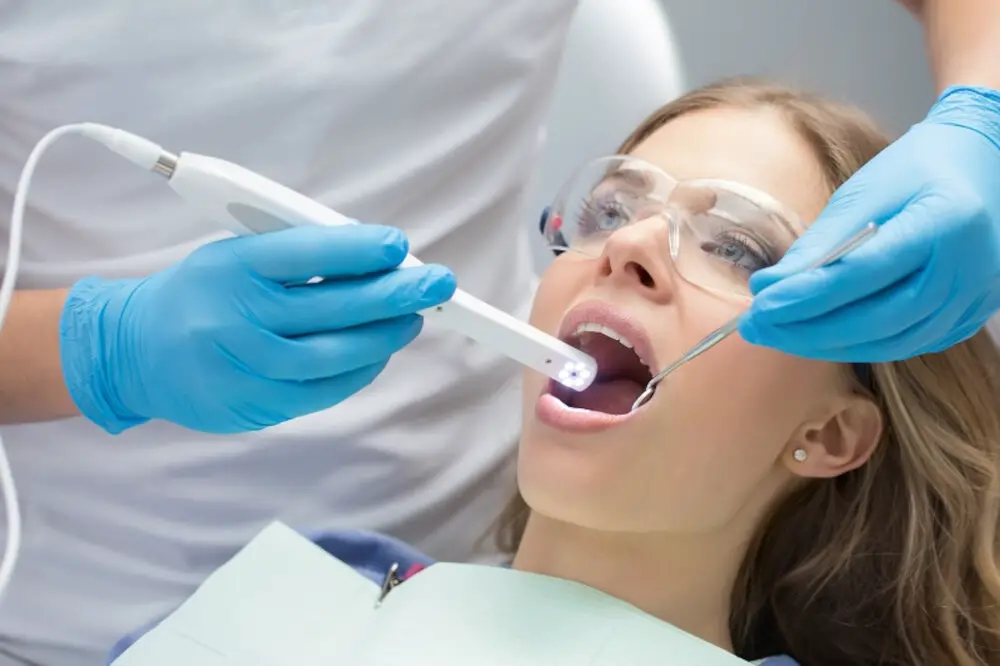
When a tooth breaks off at the gum line, it can be a painful and alarming experience. However, there are several treatment options available that can help alleviate the pain and restore the appearance and functionality of your teeth. One option is to undergo a dental crown procedure, which involves placing a cap over the damaged tooth to protect it from further damage and improve its appearance. Dental crowns are typically made from materials such as porcelain, ceramic, or metal, and can be custom-designed to match the color and shape of your natural teeth. Another treatment option for teeth that have broken off at the gum line is a dental implant. Dental implants are a more permanent solution and involve surgically placing a titanium post into the jawbone to serve as a replacement root for the missing tooth. Once the post has fused with the jawbone, a dental crown can be attached to the top of the post to create a natural-looking and functional replacement tooth. Dental implants are often preferred over other treatment options because they offer a permanent solution that can last for many years with proper care and maintenance. Whatever treatment option you choose, it is important to work closely with your dentist to develop a personalized plan that meets your specific needs and goals.
Dental bonding is a cosmetic dental procedure that involves applying a tooth-colored resin material to the teeth to improve their appearance. This procedure is typically used to repair chipped, cracked, or discolored teeth, as well as to close gaps between teeth. The process involves roughening the surface of the tooth, applying a conditioning liquid, and then applying the bonding material. The material is then cured with a special light, which hardens and bonds the material to the tooth. Dental bonding is a relatively quick and painless procedure that can be completed in a single visit to the dentist. It is a popular and effective way to improve the appearance of teeth and can last for several years with proper care and maintenance.
Crowns or bridges are common dental treatments used to restore damaged or missing teeth. A crown is a tooth-shaped cap that fits over a damaged tooth to protect and strengthen it, while a bridge is used to replace one or more missing teeth. Crowns and bridges can be made from a variety of materials, including porcelain, ceramic, or metal alloys, and are custom-made to match the color and shape of your existing teeth. These treatments can help to prevent further damage to your teeth and improve your overall oral health, but it’s important to maintain good oral hygiene practices to ensure their longevity.
Root canal therapy is a dental procedure that involves removing the infected or damaged pulp of a tooth and replacing it with a filling material. This treatment is necessary when the pulp becomes inflamed or infected due to decay, trauma, or gum disease. The procedure involves numbing the affected tooth and drilling a hole into the pulp chamber to remove the infected tissue. The canals are then cleaned, shaped, and filled with a biocompatible material. Root canal therapy is a highly effective way to save a damaged tooth and prevent the need for extraction. It also helps to alleviate pain and discomfort caused by an infected tooth. It is important to seek treatment as soon as possible if you experience any signs of dental decay or damage to prevent further complications.
Tooth extraction is a dental procedure that involves the removal of a tooth from its socket in the jawbone. This procedure is usually recommended when a tooth is severely damaged or decayed, and when other treatments such as root canal therapy or crowns are not feasible. Tooth extraction may also be necessary in cases where a tooth is impacted, meaning it is unable to emerge from the gum line properly. While tooth extraction may seem daunting, modern dental techniques and anesthesia make the procedure fairly straightforward and relatively painless. It is important to follow post-operative instructions carefully to ensure that the extraction site heals properly and to avoid complications such as infection or dry socket.
Dental implants are a popular solution for replacing missing teeth, particularly those that have broken off at the gum line. These implants consist of a titanium post that is surgically inserted into the jawbone, where it fuses with the bone over time. Once the implant has fully integrated with the bone, a custom-made crown is attached to the post, effectively replacing the missing tooth. Dental implants are highly durable and can last for many years with proper care. They also offer a more natural look and feel compared to other tooth replacement options, making them a popular choice among patients. However, the implantation process can be complex and time-consuming, and not everyone is a good candidate for the procedure. It’s important to consult with your dentist to determine if dental implants are the right choice for you.
When teeth break off at the gum line, it can be a painful and alarming experience. The most common causes of this issue are tooth decay, gum disease, and trauma to the mouth. Tooth decay weakens the tooth structure, while gum disease causes the gums to recede, leaving the root of the tooth exposed and vulnerable. Trauma to the mouth, such as a sports injury or accident, can also cause teeth to break off at the gum line. To prevent this issue, it is important to maintain good oral hygiene habits, including brushing twice a day, flossing daily, and visiting the dentist regularly for cleanings and checkups. Wearing a mouthguard during sports activities can also help prevent trauma to the mouth. In addition, being mindful of what you eat and avoiding hard foods can also help prevent teeth from breaking off at the gum line.
Maintaining good oral health is essential to prevent teeth from breaking off at the gum line. Neglecting oral hygiene can lead to the accumulation of plaque and tartar, which can cause gum disease and weaken the tooth’s structure. Brushing twice a day, flossing regularly, and visiting the dentist for routine check-ups and cleanings can help prevent tooth decay and gum disease. Additionally, consuming a balanced diet and avoiding sugary and acidic foods and drinks can also help maintain healthy teeth and gums. By taking care of your oral health, you can prevent the need for costly and invasive dental procedures to repair or replace broken teeth.
If you are experiencing tooth breakage, it is crucial to seek dental treatment as soon as possible. Ignoring the issue can lead to further damage and potential pain or infection. Your dentist can assess the cause of the breakage and recommend the appropriate treatment, whether it be a filling, crown, or extraction. Don’t let fear or uncertainty prevent you from seeking the care you need to maintain a healthy smile. With the right treatment and preventative measures, you can protect your teeth and prevent future breakages. Remember, your dental health is an essential component of your overall well-being, so prioritize it by seeking prompt and professional care.
Conclusion
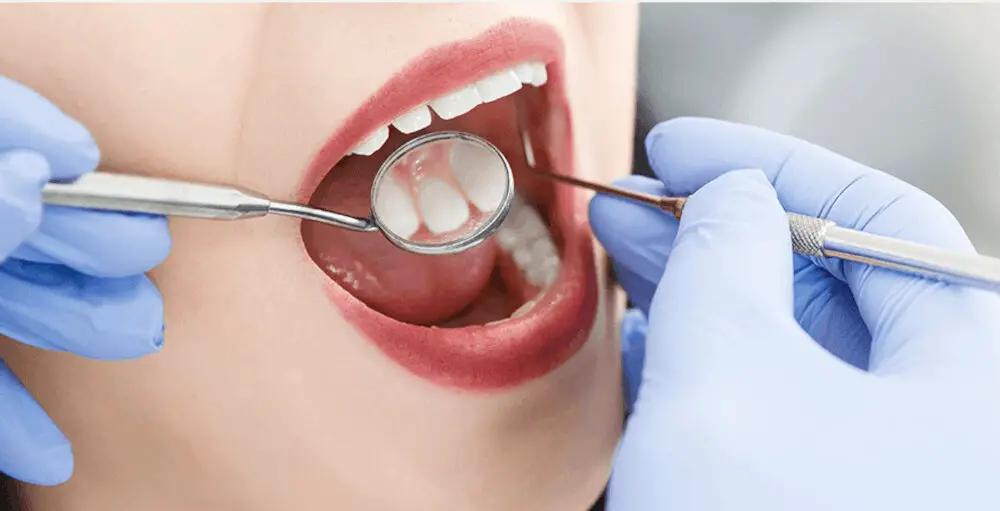
In conclusion, understanding the causes and prevention tips for teeth breaking off at the gum line can help individuals take proactive steps towards maintaining their oral health. Factors such as poor oral hygiene, teeth grinding, and gum disease can all contribute to this issue, but preventative measures such as regular dental check-ups, proper brushing and flossing techniques, and wearing a mouthguard can greatly reduce the risk. It is essential to prioritize oral health and seek professional dental care to ensure that teeth remain strong and healthy for a lifetime of smiles. By taking action to prevent teeth from breaking off at the gum line, individuals can maintain their confidence, comfort, and overall quality of life.

